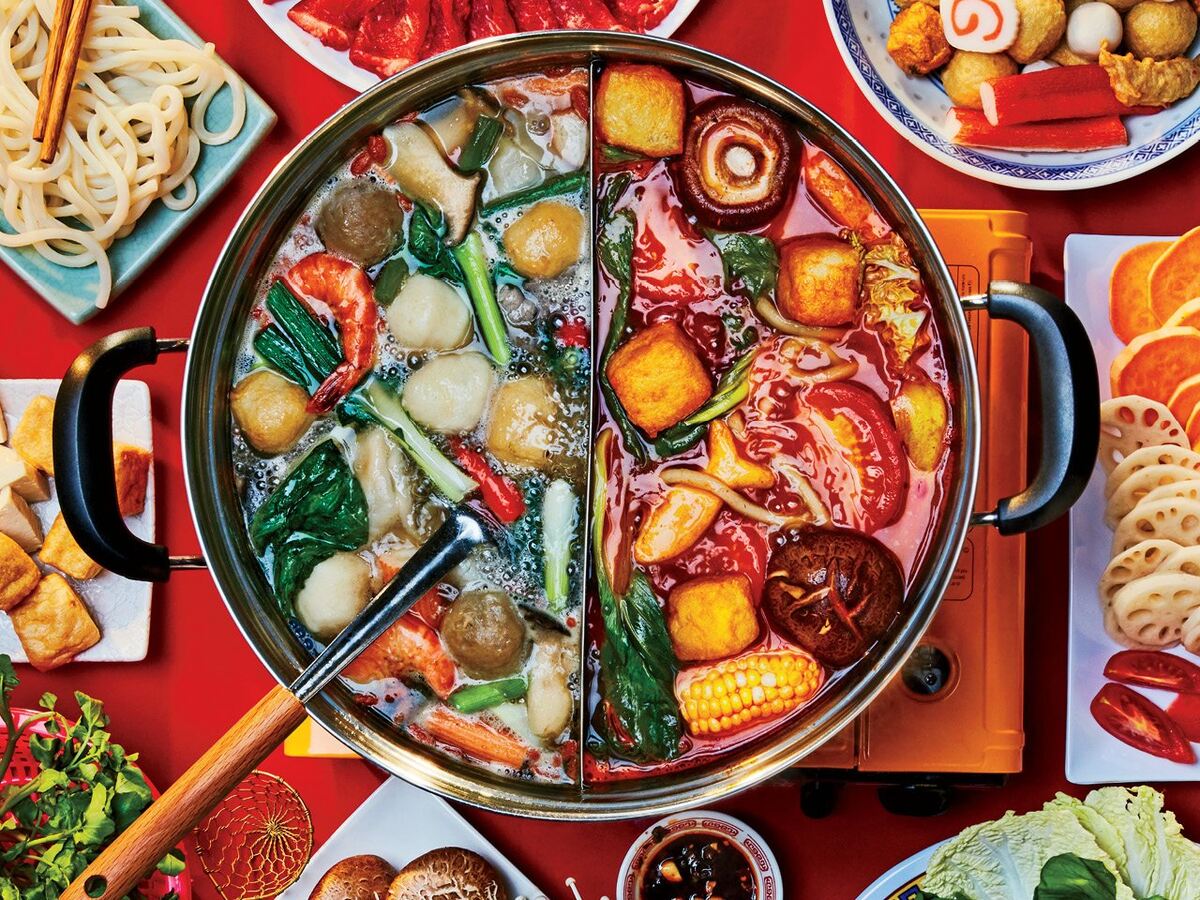

Articles
What Goes In A Hot Pot
Modified: August 16, 2024
Discover a variety of articles on what goes in a hot pot, from ingredients to cooking techniques. Enhance your hot pot experience with expert advice and tips.
(Many of the links in this article redirect to a specific reviewed product. Your purchase of these products through affiliate links helps to generate commission for Storables.com, at no extra cost. Learn more)
Introduction
Hot pot, also known as steamboat, is a popular dining experience in many Asian countries, including China, Japan, and Korea. It involves cooking a variety of ingredients in a pot of simmering broth, creating a delicious and interactive meal. Whether enjoyed at a restaurant or in the comfort of your own home, hot pot is a fantastic way to gather friends and family for a shared dining experience.
The key to a great hot pot lies in the selection of ingredients. From meats, seafood, and vegetables to tofu, noodles, and condiments, each component plays a vital role in creating a mouthwatering and satisfying hot pot meal. In this article, we will explore the different options for hot pot and provide insights into how to make the most of your hot pot experience.
So, grab your chopsticks and get ready to dive into the world of hot pot ingredients!
Key Takeaways:
- Dive into the world of hot pot with a variety of meats, seafood, vegetables, and more. Create a personalized and interactive dining experience that brings people together for a flavorful and communal feast.
- Unleash your creativity and bond over the bubbling pot of simmering broth. Hot pot offers endless possibilities for ingredient combinations, dipping sauces, and broths, creating a harmonious and unforgettable dining adventure.
Read more: What Is A Hot Pot Restaurant
Meat Options for Hot Pot
When it comes to hot pot, meat is often the star of the show. There are a variety of meat options to choose from, each offering its own unique flavors and textures. Here are some popular meat options for hot pot:
- Beef: Thinly sliced beef, such as ribeye or flank steak, is a classic choice for hot pot. The tender and succulent beef cooks quickly in the simmering broth, absorbing the flavors and adding a robust taste to the dish.
- Pork: Pork belly, thinly sliced pork loin, or even pork meatballs are delicious options for hot pot. The marbled fat in pork belly adds richness to the broth, while pork loin brings a lean and tender texture.
- Chicken: Tender chicken slices or chicken meatballs are popular choices for those seeking a lighter meat option. The delicate flavor of chicken blends well with the broth and other ingredients.
- Lamb: For those who enjoy a more gamey flavor, lamb slices or lamb meatballs are excellent choices. The rich flavor of lamb pairs well with aromatic broths and adds a unique twist to the hot pot experience.
- Seafood: While seafood is commonly associated with the next section, it’s worth mentioning that seafood options such as shrimp, squid, and scallops can also be added to the hot pot. Their natural sweetness and delicate textures complement the broth and create a delightful seafood infusion.
When selecting meat for hot pot, it’s essential to choose thinly sliced cuts to ensure they cook quickly and evenly in the hot pot. You can often find pre-sliced meat at Asian grocery stores specifically labeled for hot pot. Alternatively, you can ask your local butcher to thinly slice the desired cuts for you.
Remember, part of the joy of hot pot is the cooking process, so be sure to enjoy the sizzling sounds and enticing aromas as you cook your meat to perfection. Don’t be afraid to experiment with different combinations and flavors to find your favorite meat options for hot pot!
Seafood Options for Hot Pot
Seafood is a delightful addition to any hot pot meal, bringing a fresh and briny flavor to the simmering broth. Whether you’re a seafood lover or looking to diversify your hot pot experience, here are some popular seafood options to consider:
- Shrimp: Shrimp is a classic choice for hot pot, known for its sweet and succulent meat. You can use both whole shrimp or peeled and deveined shrimp, depending on your preference. Just be sure not to overcook them to maintain their tender texture.
- Squid: Squid adds a unique chewy texture to hot pot. Sliced squid rings or whole squid can be cooked to perfection in the flavorful broth. The mild and slightly sweet taste of squid pairs well with a variety of dipping sauces.
- Scallops: Plump and juicy scallops are a luxurious addition to hot pot. The delicate flavor and tender texture of scallops make them an excellent choice for those seeking a slightly more indulgent hot pot experience.
- Fish: You can include various types of fish in your hot pot, such as sliced white fish or fish balls. Fish imparts a mild, slightly sweet taste to the broth and provides a lighter alternative to other meat options.
- Mussels: Mussels are another popular seafood option for hot pot. They add a hint of brininess and a tender bite to the overall dish. Be sure to clean and debeard the mussels before adding them to the hot pot.
- Crab: If you’re feeling adventurous and want to elevate your hot pot experience, consider adding crab. You can use crab legs or even whole crabs, depending on the size of your hot pot and your cravings. The sweet and delicate meat of crab is a true delicacy.
When cooking seafood in hot pot, it’s important to remember that they tend to cook faster than other meat options. Keep a close eye on them and remove them from the broth as soon as they are cooked through to prevent overcooking and maintain their natural flavors and textures.
Aside from these popular options, you can explore other seafood varieties based on your culinary preferences and availability. Don’t forget to provide dipping sauces like soy sauce, sesame oil, or chili sauce to enhance the seafood flavors and add another layer of enjoyment to your hot pot experience.
Vegetables for Hot Pot
Incorporating a variety of vegetables into your hot pot not only adds color and vibrancy to the dish but also provides a healthy and nutritious balance to the meal. Here are some popular vegetable options to consider for your hot pot:
- Leafy Greens: Leafy greens like Chinese cabbage, bok choy, and spinach are excellent choices for hot pot. They cook quickly and add a refreshing crunch to the dish. Simply blanch them in the broth for a short time until they wilt and retain their vibrant green color.
- Mushrooms: Mushrooms bring an earthy and savory flavor to hot pot. Shitake mushrooms, enoki mushrooms, and oyster mushrooms are commonly used in hot pot due to their unique textures and ability to soak up the flavors of the broth.
- Bean Sprouts: Bean sprouts provide a delicate and slightly crunchy texture to the hot pot. They are a great source of fiber and are often added towards the end of the cooking process as they require minimal time to cook.
- Root Vegetables: Root vegetables like carrots, daikon radish, and lotus root can be sliced and added to the hot pot. These vegetables add a subtle sweetness and maintain their texture even after being cooked in the simmering broth.
- Bell Peppers: Bright and colorful bell peppers add a pop of color and a slightly sweet taste to hot pot. Opt for a mix of red, yellow, and green bell peppers for a visually appealing presentation.
- Corn: Corn on the cob is a popular addition to hot pot, bringing a burst of sweetness to the dish. Cut the corn into smaller pieces to make them easier to cook and handle.
Feel free to explore and experiment with other vegetables based on your personal preferences and seasonal availability. The key is to choose vegetables that can hold their shape and retain their flavors when cooked in the hot pot broth.
As you cook the vegetables in the hot pot, keep in mind that different vegetables have varying cooking times. Add harder vegetables like carrots and radishes first, followed by leafy greens, mushrooms, and more delicate vegetables towards the end. This will ensure that all the vegetables are cooked to perfection and maintain their flavors and textures.
Don’t forget to prepare a variety of dipping sauces to complement the flavors of the vegetables and make your hot pot experience even more enjoyable.
Tofu and Soy Products for Hot Pot
Tofu and soy products are widely used in hot pot due to their ability to absorb the flavors of the broth while providing a plant-based protein alternative. They bring a delightful texture and taste to the hot pot experience. Here are some popular tofu and soy products to consider for your hot pot:
- Regular Tofu: Regular tofu, also known as silken tofu, has a soft and delicate texture. It easily soaks up the flavors of the hot pot broth, adding a creamy and velvety touch to the dish.
- Firm Tofu: Firm tofu holds its shape better during cooking. It has a denser texture and is ideal for those who prefer a heartier bite in their hot pot. Firm tofu is commonly sliced into cubes or rectangles and added to the simmering broth.
- Tofu Skin: Tofu skin, also known as bean curd sheets or yuba, is a popular addition to hot pot. It is made by boiling soy milk until a thin film forms on the surface, which is then dried and rolled into sheets. Tofu skin has a chewy and slightly crisp texture that adds variety to the hot pot.
- Tofu Puffs: Tofu puffs are small, porous cubes of tofu that have been fried until they become light and crispy. They absorb the flavors of the broth and add a delightful crunch to the hot pot.
- Soybean Sprouts: Soybean sprouts are made from sprouted soybeans and are commonly used in Asian cuisine. They have a slightly nutty flavor and a crunchy texture, making them a unique addition to hot pot.
- Vegetarian Meat Substitutes: If you’re following a vegetarian or vegan diet, you can also find a variety of soy-based meat substitutes, such as mock meats or vegetarian fish balls. These products mimic the taste and texture of meat, adding a protein-rich component to your hot pot.
When adding tofu and soy products to the hot pot, it’s best to add them towards the end of the cooking process to prevent them from breaking apart or becoming too mushy. This allows them to absorb the flavors of the broth without losing their delicate textures.
Make sure to have a variety of dipping sauces available to accompany the tofu and soy products. The unique flavors and textures of these ingredients, combined with the savory broth, create a wholesome and satisfying hot pot experience for everyone at the table.
Prepare a variety of thinly sliced meats, seafood, and vegetables for your hot pot. This will ensure a delicious and diverse dining experience for you and your guests.
Read more: What Is A British Hot Pot
Noodles and Dumplings for Hot Pot
No hot pot meal is complete without the addition of noodles and dumplings. These starchy delights add a comforting and filling element to the hot pot experience. Here are some noodle and dumpling options to consider for your hot pot:
- Mung Bean Noodles: Mung bean noodles, also known as glass noodles or cellophane noodles, are popular in hot pot due to their transparent appearance and slippery texture. They cook quickly in the simmering broth and absorb the flavors, adding a pleasing chewiness to the dish.
- Udon Noodles: Thick and chewy udon noodles are a great addition to hot pot. These Japanese noodles retain their texture even after cooking in the hot broth, providing a satisfying bite. They absorb the flavors of the broth and complement the other ingredients.
- Rice Noodles: Rice noodles are a common choice for hot pot, offering a soft and delicate texture. They cook quickly and are perfect for soaking up the flavorful broth. Whether you prefer thin rice vermicelli or wider rice noodles, they add a lightness to the overall dish.
- Dumplings: Dumplings, also known as potstickers or jiaozi, are a popular addition to hot pot. You can find a variety of dumplings, both meat-filled and vegetarian options, in the freezer section of your local Asian grocery store. These dumplings cook quickly in the hot pot and provide a burst of flavor with every bite.
- Wontons: Wontons are similar to dumplings but are usually smaller in size and often filled with a mixture of ground meat and seasonings. They are delicate and cook rapidly in the hot pot. Wontons add a delightful texture and flavor to the broth.
- Tanghulu: Tanghulu is a traditional Chinese snack that consists of skewered fruits, usually hawthorn berries, coated in a hardened sugar glaze. While not a traditional noodle or dumpling, tanghulu can be a fun and sweet addition to your hot pot experience as a refreshing palate cleanser.
When cooking noodles and dumplings in the hot pot, be sure to monitor their cooking time to avoid overcooking and ensure that they maintain their desired textures. Different types of noodles and dumplings may have varying cooking times, so it’s important to follow the package instructions or refer to specific recipes for guidance.
These starchy additions provide a satisfying and filling component to your hot pot meal. Enjoy the hearty goodness of noodles and the burst of flavors in every bite of dumplings as you indulge in the communal dining experience of hot pot.
Sauces and Condiments for Hot Pot
One of the highlights of hot pot is the variety of sauces and condiments that accompany the meal. These flavorful additions enhance the overall taste and allow you to customize your hot pot experience according to your personal preferences. Here are some popular sauces and condiments to consider for your hot pot:
- Soy Sauce: A staple in Asian cuisine, soy sauce adds a savory and salty flavor to hot pot. You can use regular soy sauce or opt for low-sodium soy sauce for a healthier option. Experiment with different soy sauce varieties, such as light soy sauce or dark soy sauce, to find the depth of flavor that suits your taste.
- Sesame Oil: Sesame oil brings a rich and nutty aroma to hot pot. Just a few drops of high-quality sesame oil can elevate the flavors of the broth and ingredients. Add it as a finishing touch to enhance the overall taste of the dish.
- Chili Sauce: If you enjoy a spicy kick, chili sauce is a must-have for hot pot. Whether it’s spicy garlic sauce, Szechuan peppercorn oil, or chili bean paste, these fiery condiments add heat and flavors to your hot pot. Start with a small amount and adjust according to your spice tolerance.
- Peanut Sauce: This creamy and nutty sauce is a popular choice for hot pot. Made with ground peanuts, soy sauce, and a hint of sweetness, peanut sauce adds a satisfying richness to the dish. It pairs well with a variety of ingredients, especially tofu and vegetables.
- Vinegar: Vinegar, such as black vinegar or rice vinegar, provides a tangy and slightly acidic taste that balances the richness of the hot pot. You can dip your cooked ingredients into vinegar to cut through the flavors and add a refreshing touch.
- Garlic and Scallions: Freshly minced garlic and chopped scallions can be mixed together as a topping or condiment for your hot pot. They add a burst of freshness and aromatic flavors to each bite.
- Sesame Paste: Sesame paste, similar to tahini, is a creamy and nutty condiment that adds depth to your hot pot. It pairs well with meat and vegetables, creating a luscious and velvety texture.
Feel free to mix and match these sauces and condiments to create your perfect flavor combination. Dip your cooked ingredients into the sauces or drizzle them directly into your bowl of broth for an added burst of flavor. Don’t be afraid to get creative and experiment with different combinations to find your favorite mix.
Remember, the joy of hot pot lies in the shared experience, so don’t forget to exchange dip recipes and recommendations with your dining companions. Enjoy the process of customizing your hot pot to your liking, and savor the delicious flavors that the sauces and condiments bring to the table.
Broths for Hot Pot
The broth is the heart and soul of hot pot, infusing the ingredients with rich flavors and creating a comforting and aromatic base for the meal. There are various types of broths that you can choose from, each offering a unique taste and character. Here are some popular broth options for your hot pot:
- Clear Broth: Clear broth, also known as light broth or chicken broth, is a simple and comforting base for hot pot. It is made by simmering bones, vegetables, and aromatic herbs for several hours, resulting in a clear and flavorful liquid. Clear broth allows the natural flavors of the ingredients to shine through.
- Miso Broth: Miso broth adds a savory and slightly tangy flavor to hot pot. Made from fermented soybeans, miso paste is mixed with a combination of vegetable broth, dashi, or chicken broth. Miso broth provides a rich and umami-packed base that pairs well with a wide range of ingredients.
- Spicy Broth: Spicy broth, also known as “ma la” broth, is a popular choice for those who enjoy a fiery and numbing sensation. It is typically made with a combination of Szechuan peppercorns, dried chili peppers, and various spices. The intense heat and numbing sensation add a bold and adventurous element to your hot pot.
- Tomato Broth: Tomato broth offers a tangy and slightly sweet taste to hot pot. It is made by simmering tomatoes, along with vegetables and herbs, to create a flavorful and vibrant broth. Tomato broth pairs well with seafood, vegetables, and light meats, adding a delightful twist to the hot pot experience.
- Herbal Broth: Herbal broths use a combination of Chinese herbs and spices to create a fragrant and medicinal base for hot pot. Common herbs include goji berries, Chinese yam, dried dates, and dang gui. The herbal broth not only imparts a distinct and aromatic flavor but is also believed to have various health benefits.
- Bone Broth: Bone broth is known for its rich and collagen-packed qualities. It is made by simmering animal bones, such as beef or chicken bones, along with vegetables and herbs, for an extended period. Bone broth provides a hearty and nourishing base for hot pot, making it a popular choice for meat lovers.
You can purchase pre-made soup bases or make your own broth from scratch, depending on your preference and time availability. Homemade broths allow for more customization and control over the flavors, while pre-made options offer convenience and consistency.
It’s also common to have a divided hot pot with different broths, allowing you to enjoy multiple flavors at once. This way, everyone can choose their preferred broth or even create their own unique combinations.
Remember to keep the broth simmering throughout the meal to ensure that the flavors continue to develop and intensify. As you cook the ingredients in the broth, they will absorb the delicious flavors, creating a delectable hot pot experience.
With a wide range of broths to choose from, you can unleash your creativity and tailor your hot pot to suit your taste preferences and cravings. Enjoy the process of selecting and simmering your broth, and savor the wonderful flavors that it brings to your hot pot feast.
Conclusion
Hot pot is more than just a meal – it’s a social and interactive dining experience that brings people together to share delicious food and create lasting memories. With its wide array of ingredients and flavors, hot pot allows for endless possibilities and personalization. Whether you’re a meat lover, seafood enthusiast, or vegetarian, there are plenty of options to suit everyone’s preferences.
From the selection of meats and seafood to the assortment of vegetables and tofu, hot pot offers a balanced and wholesome meal. The simmering broth infuses the ingredients with rich flavors, while the dipping sauces and condiments add a delightful touch of customization. The combination of flavors and textures creates a harmonious and satisfying experience that keeps people coming back for more.
Hot pot is not just about the food; it’s also about the connections formed and the bonds strengthened around the table. Gathering loved ones or friends for a hot pot feast fosters togetherness, conversation, and laughter. The shared experience of cooking and enjoying the meal creates a sense of community and warmth.
Whether you’re hosting a hot pot dinner party or enjoying a meal at a hot pot restaurant, the key is to have fun and be adventurous. Experiment with different ingredient combinations, try various sauces and condiments, and explore the diverse broths available. Let your creativity run wild as you create your perfect hot pot masterpiece.
So, the next time you’re craving a flavorful and communal dining experience, consider gathering around a hot pot. Explore the tantalizing options for meats, seafood, vegetables, tofu, noodles, and dumplings. Dare to try new flavors and combinations, and savor the joy of bonding over the bubbling pot of simmering broth.
Hot pot brings people closer, satisfies the taste buds, and creates an unforgettable dining experience. Embrace the warmth, the flavors, and the joy of hot pot as you embark on a culinary adventure like no other.
Frequently Asked Questions about What Goes In A Hot Pot
Was this page helpful?
At Storables.com, we guarantee accurate and reliable information. Our content, validated by Expert Board Contributors, is crafted following stringent Editorial Policies. We're committed to providing you with well-researched, expert-backed insights for all your informational needs.
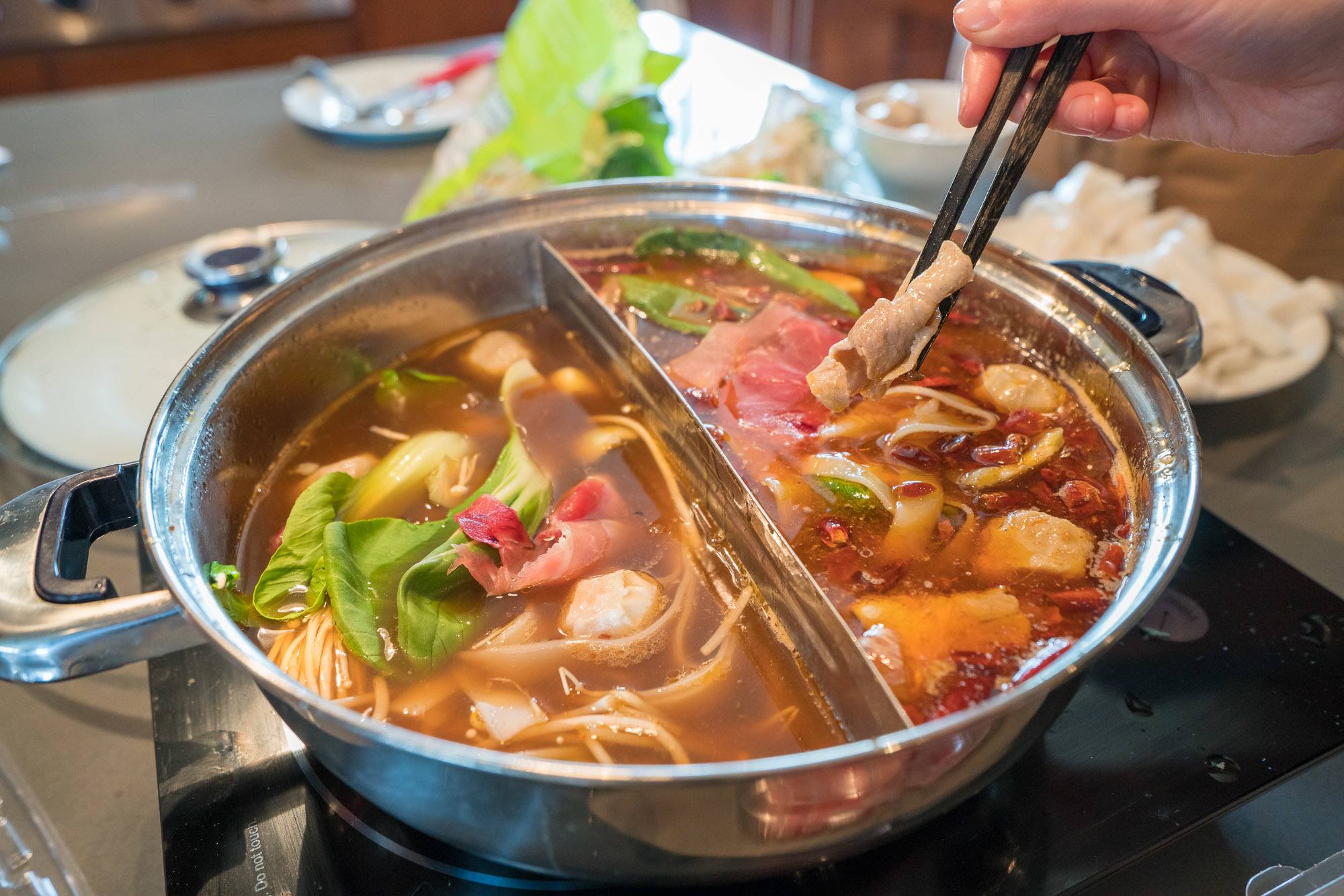
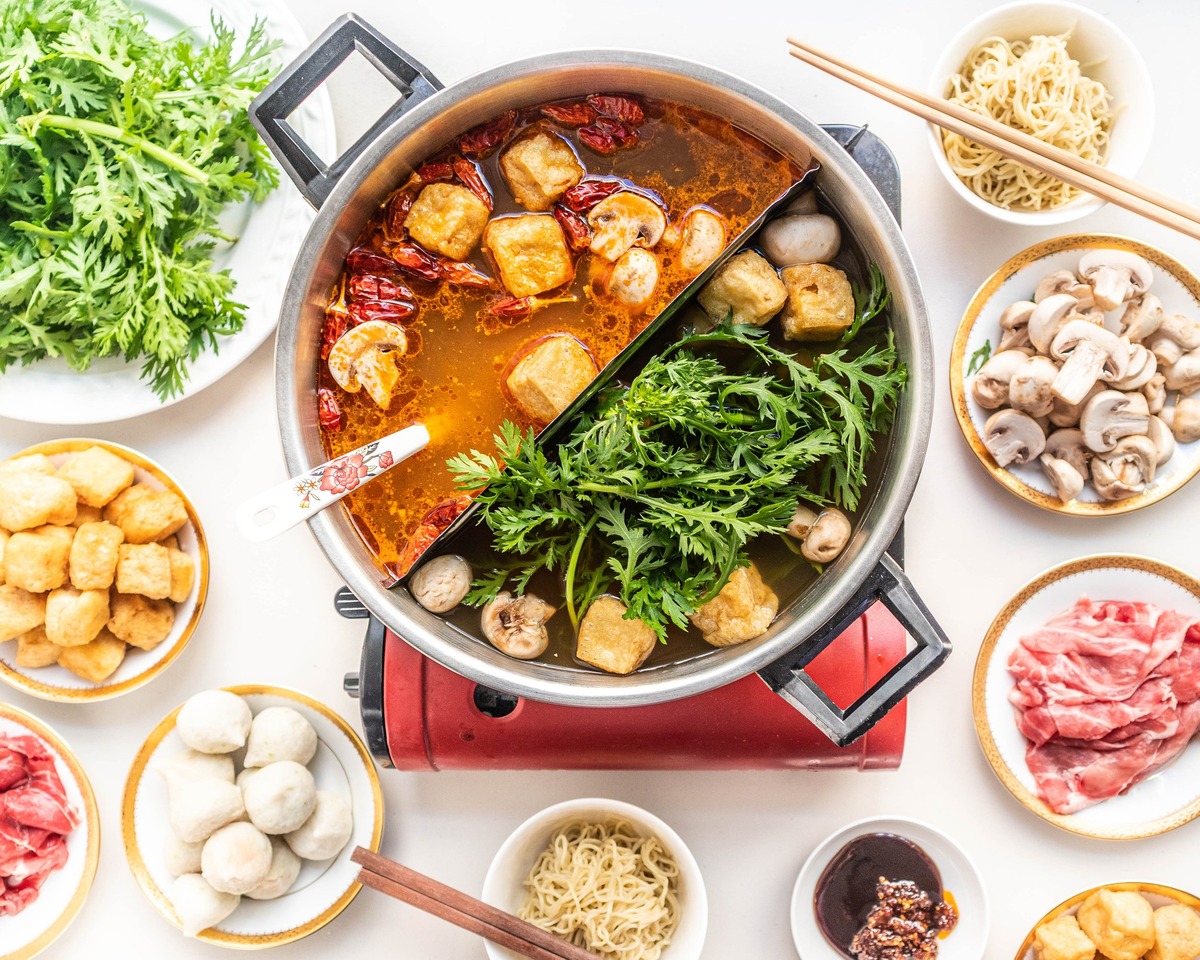
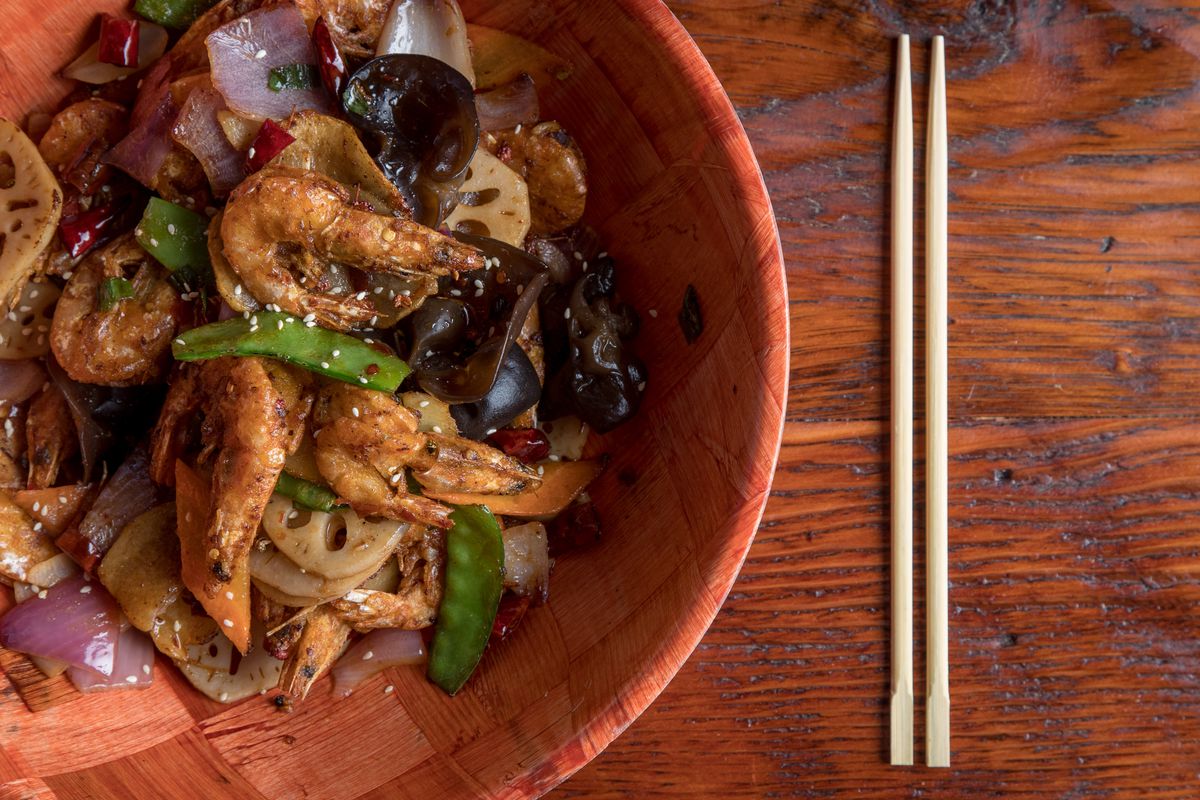
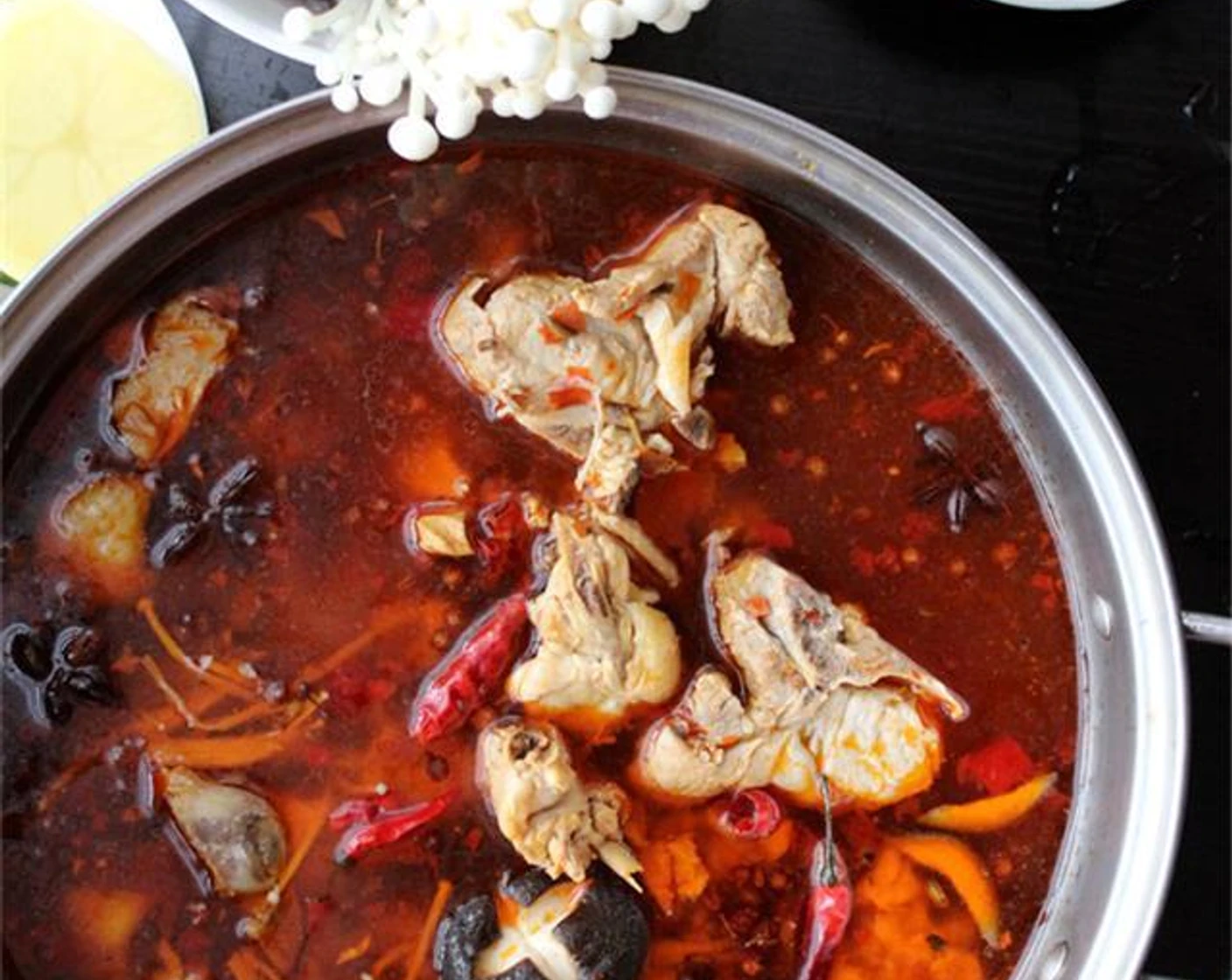
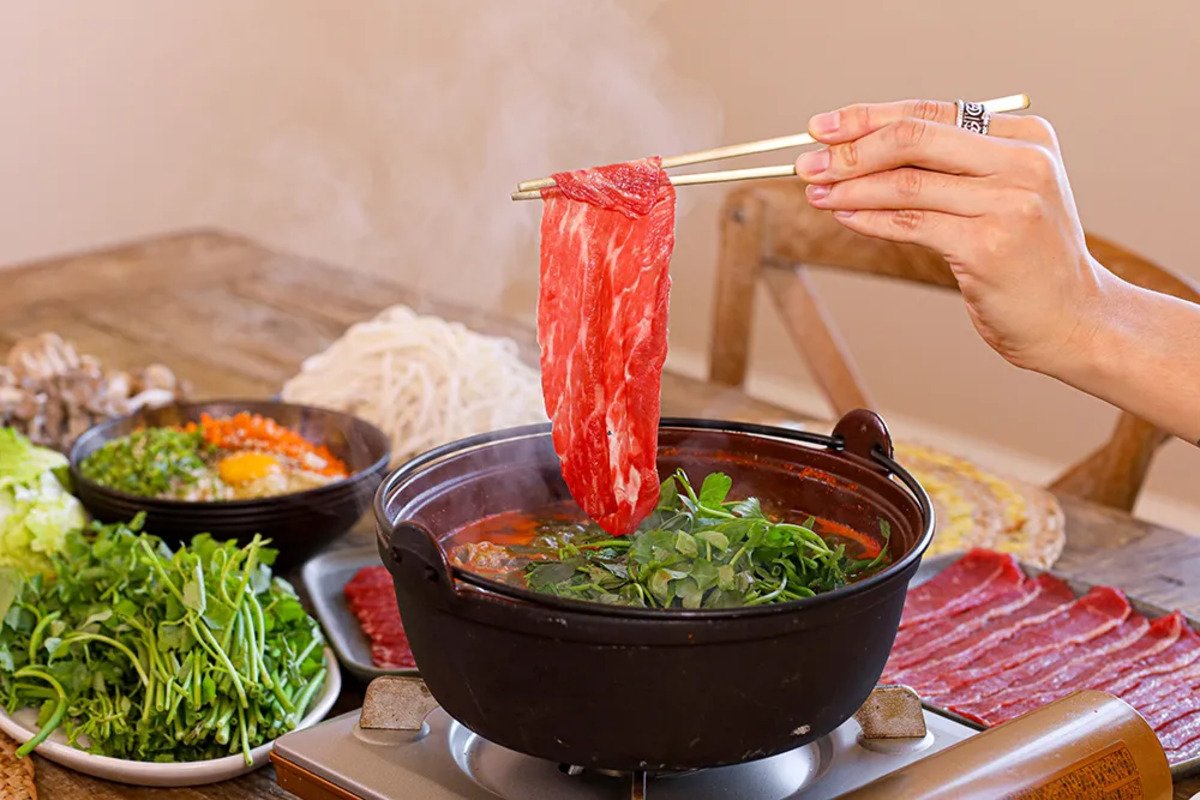
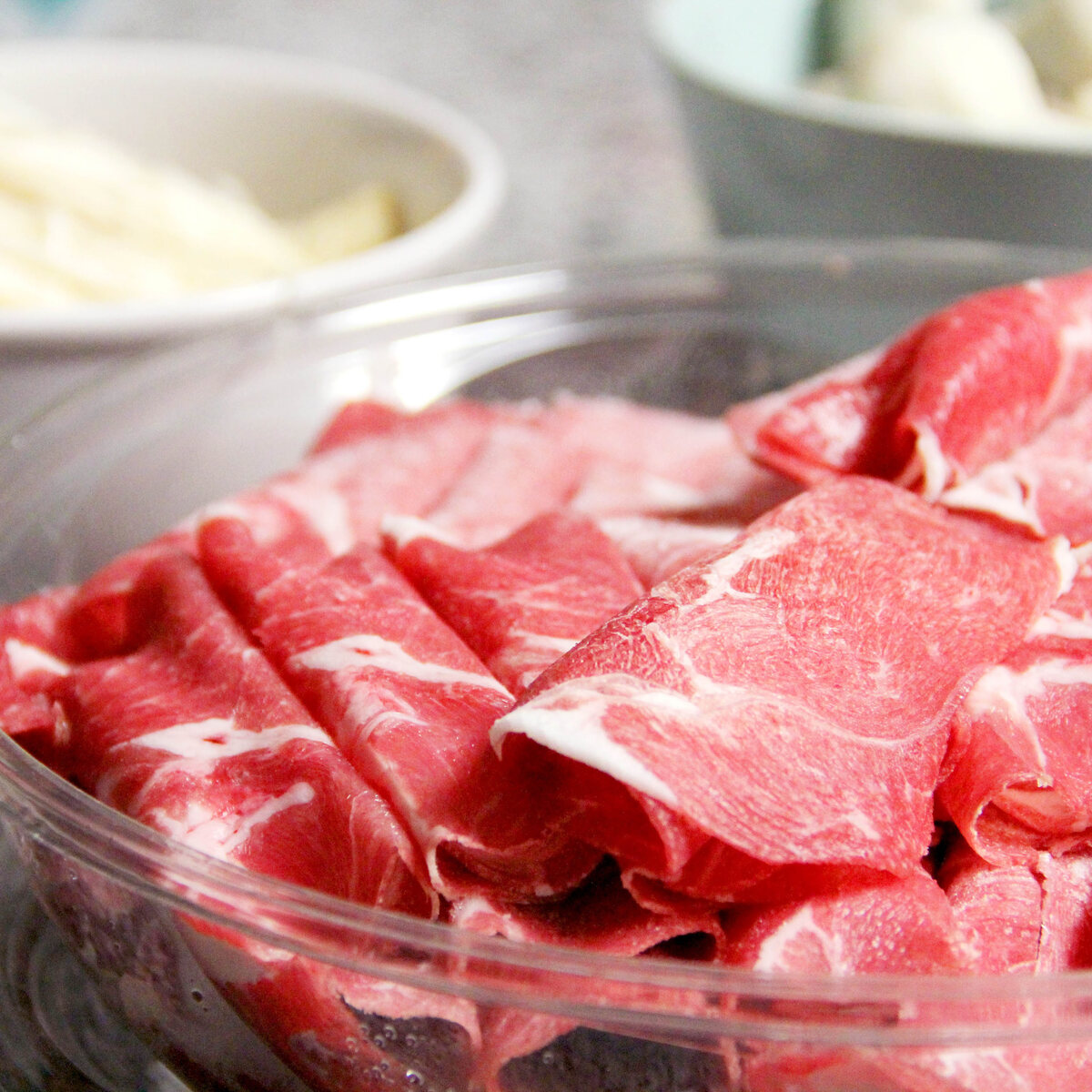
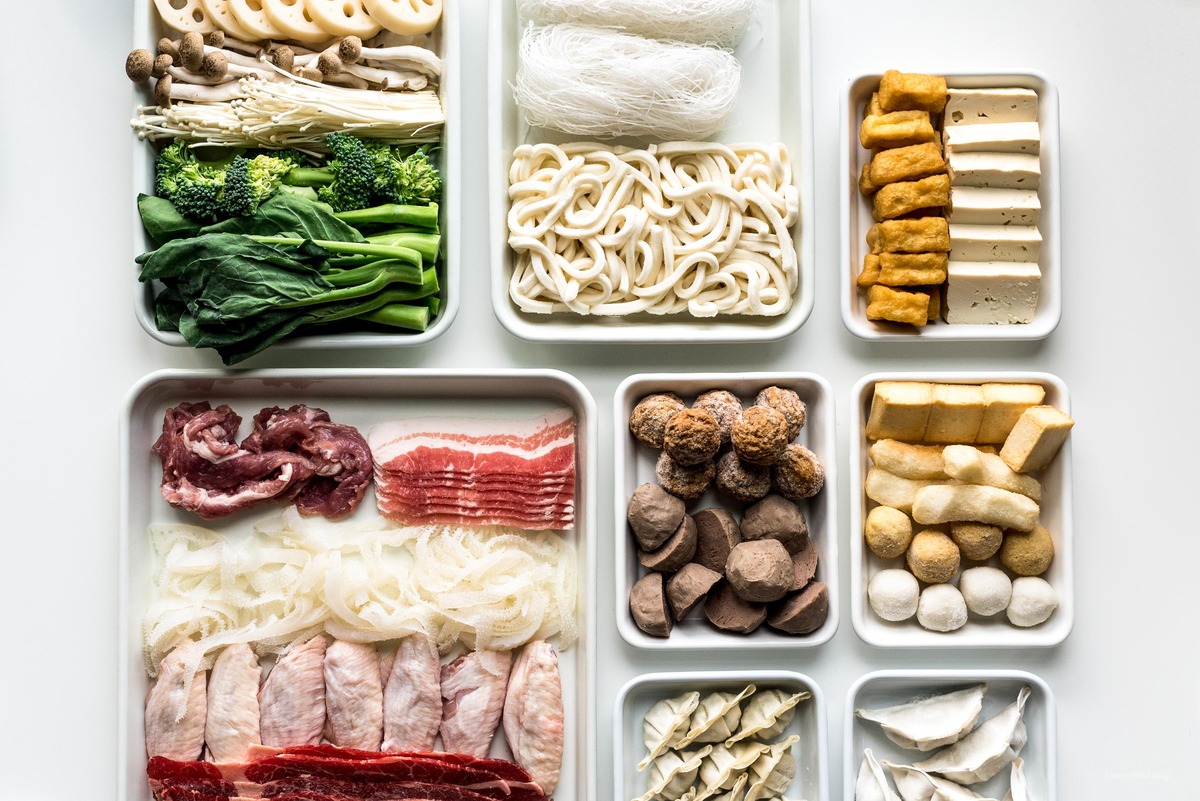
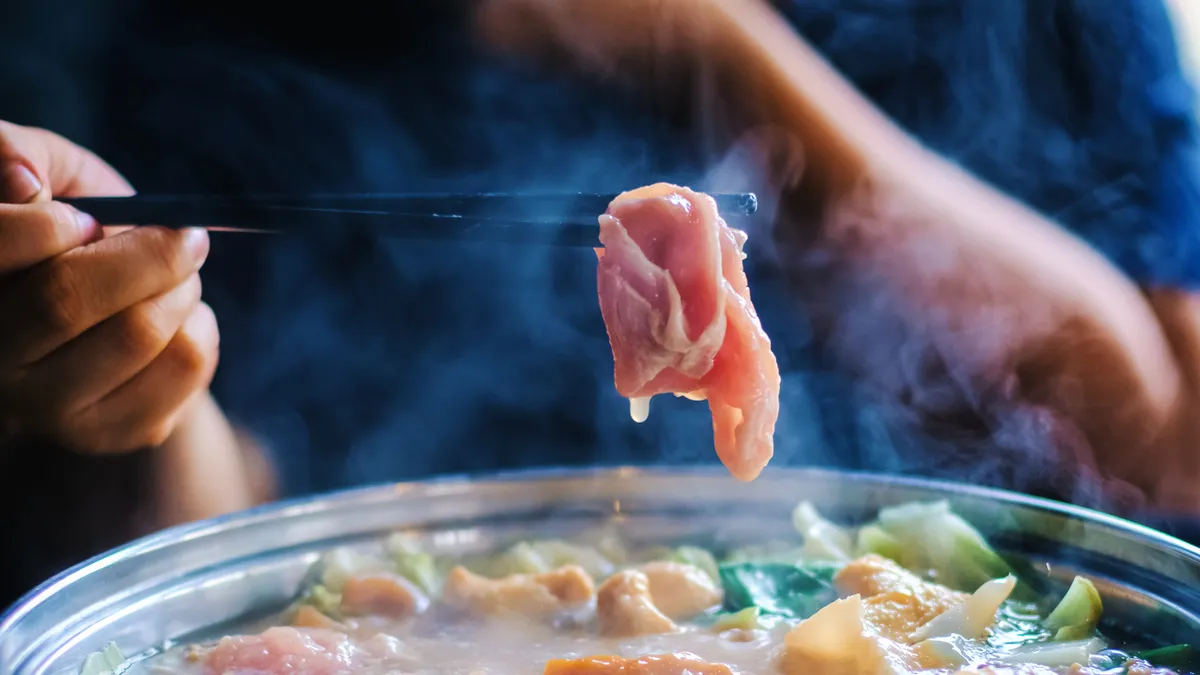
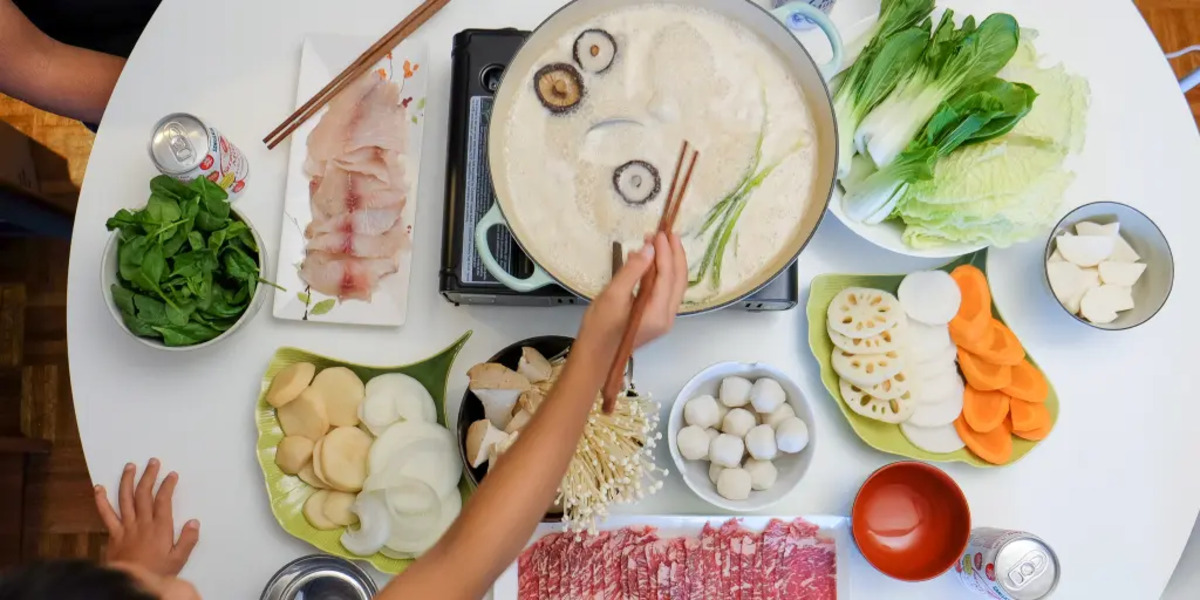
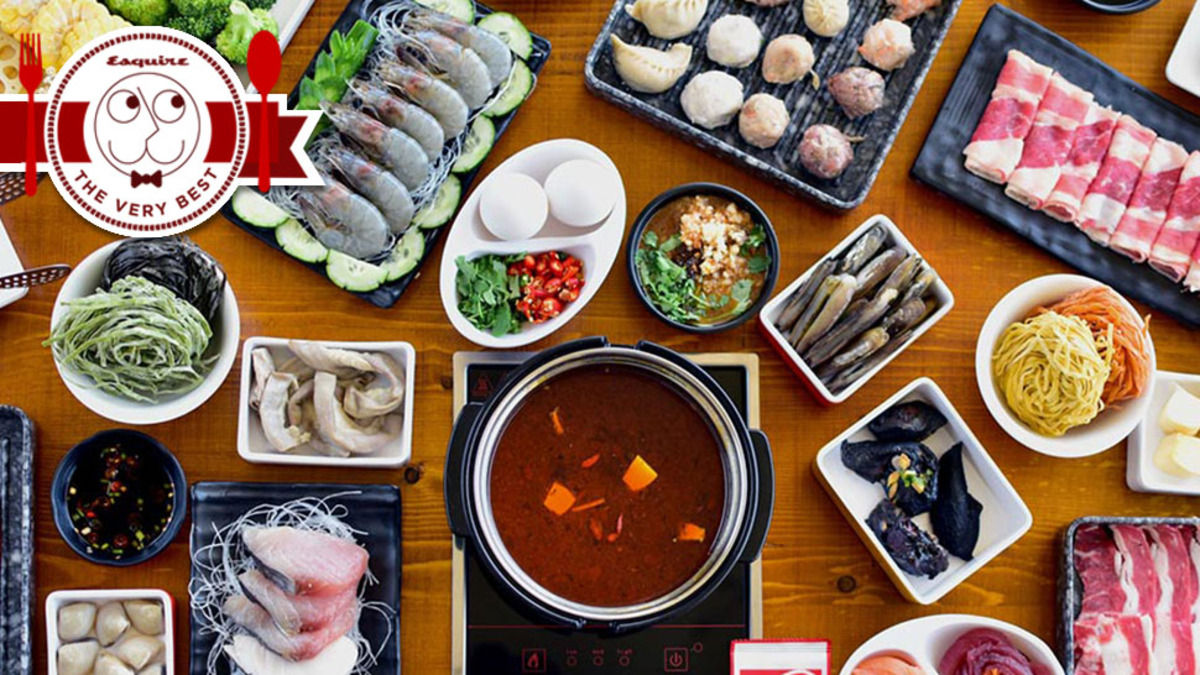
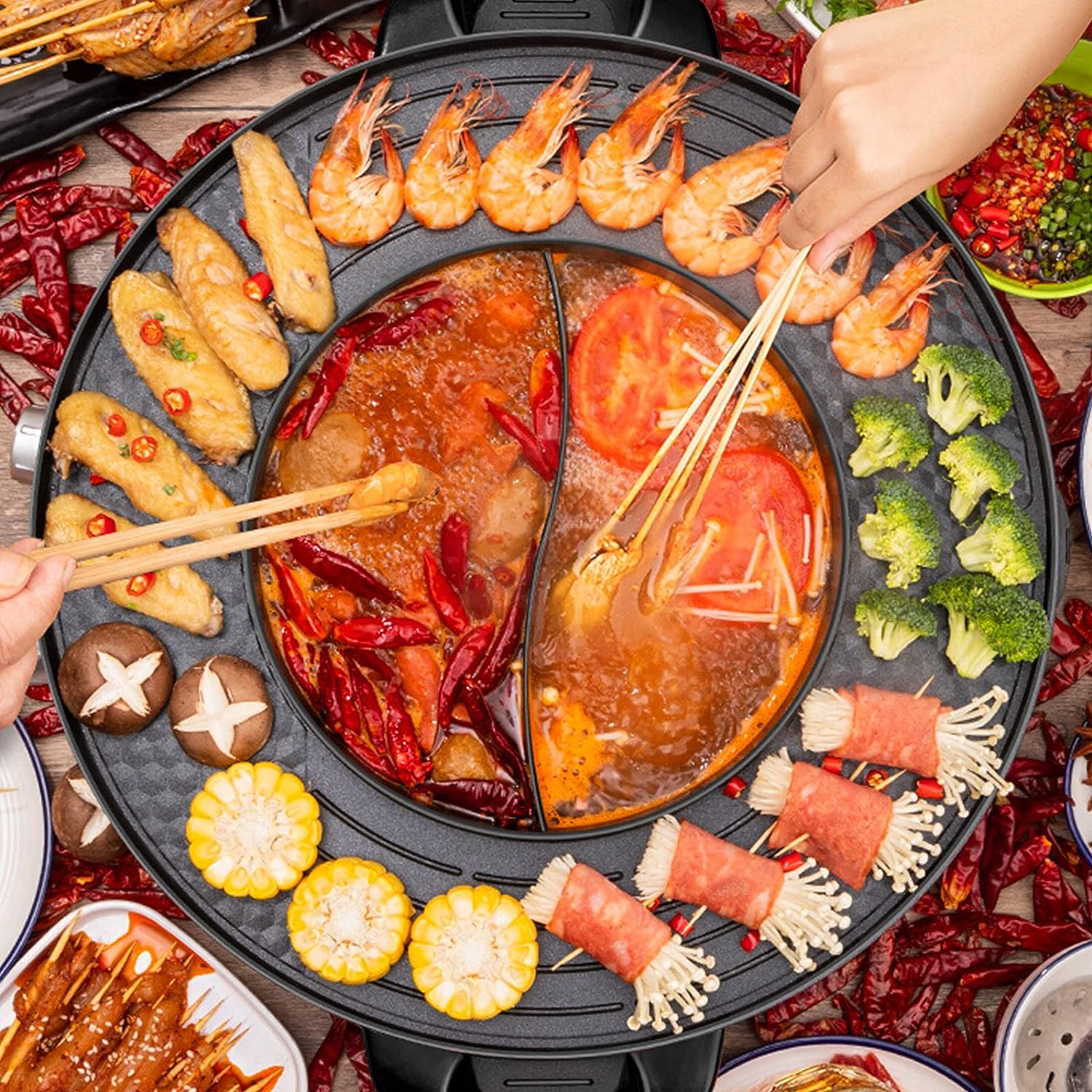
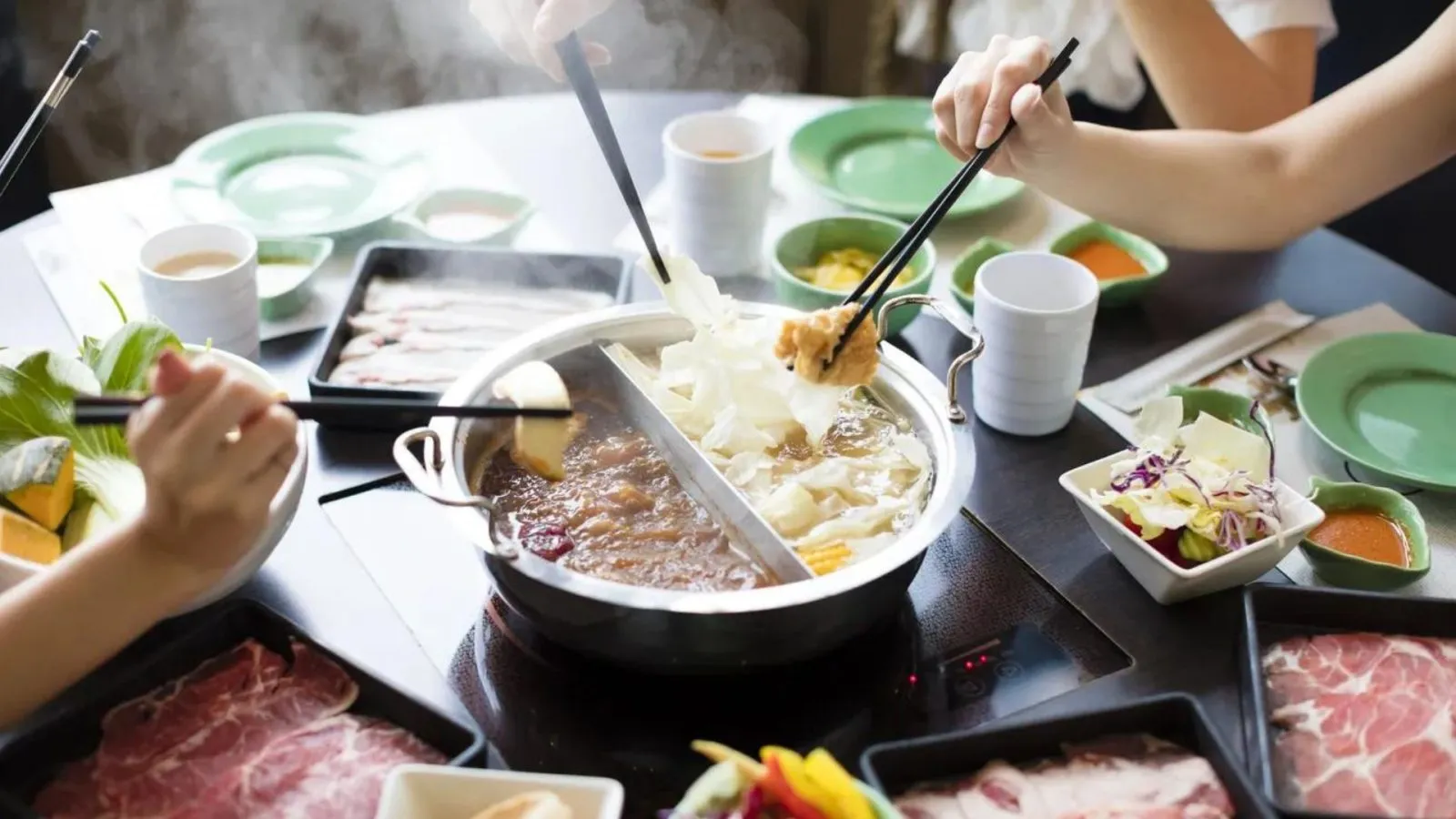

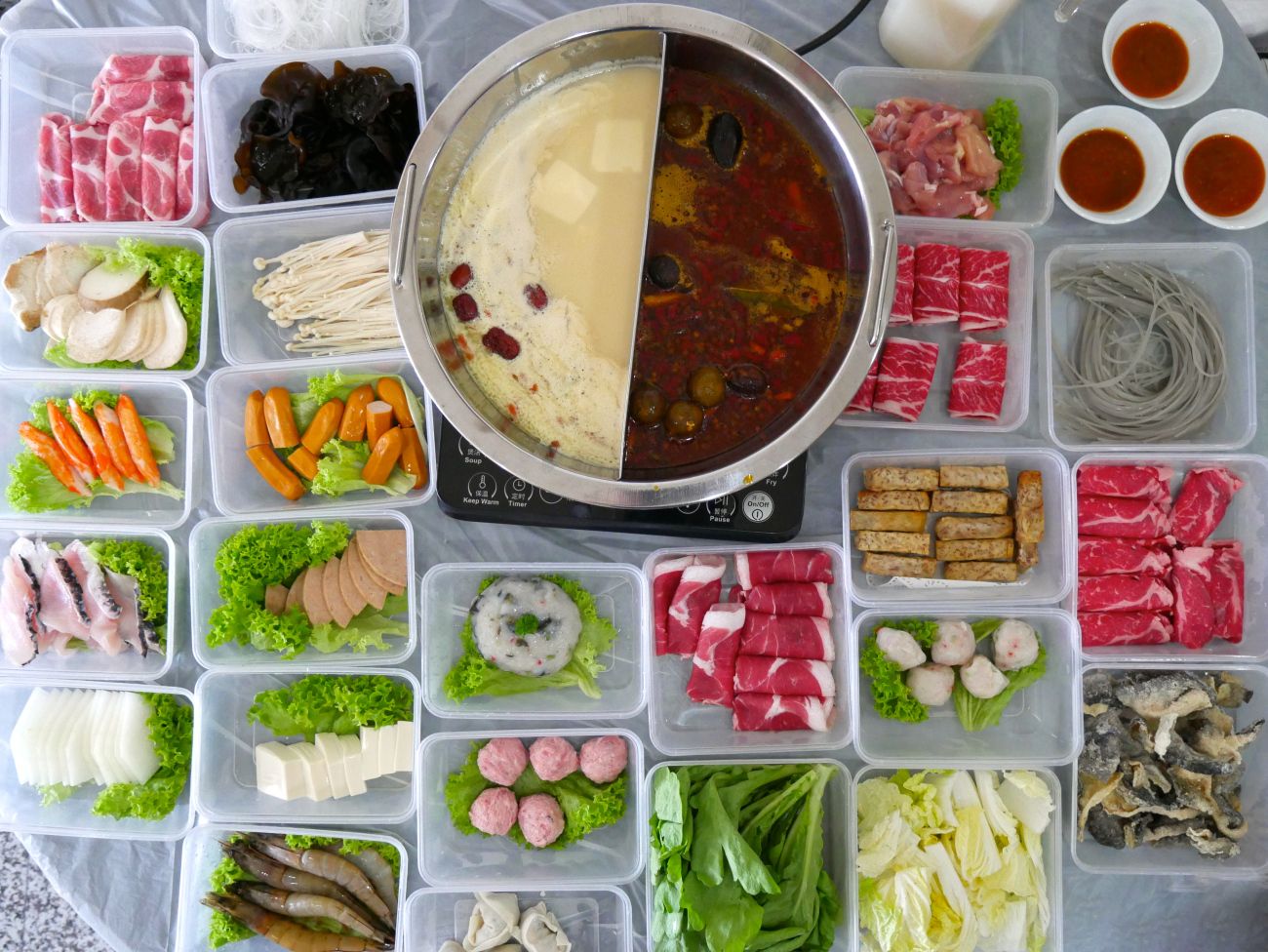

0 thoughts on “What Goes In A Hot Pot”